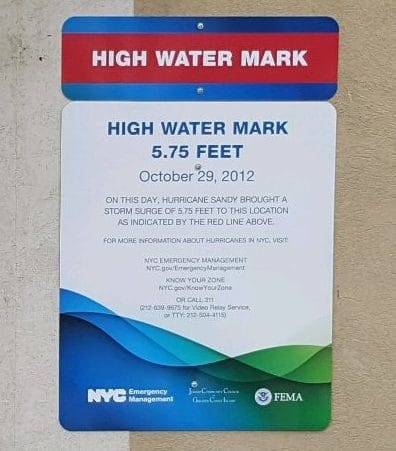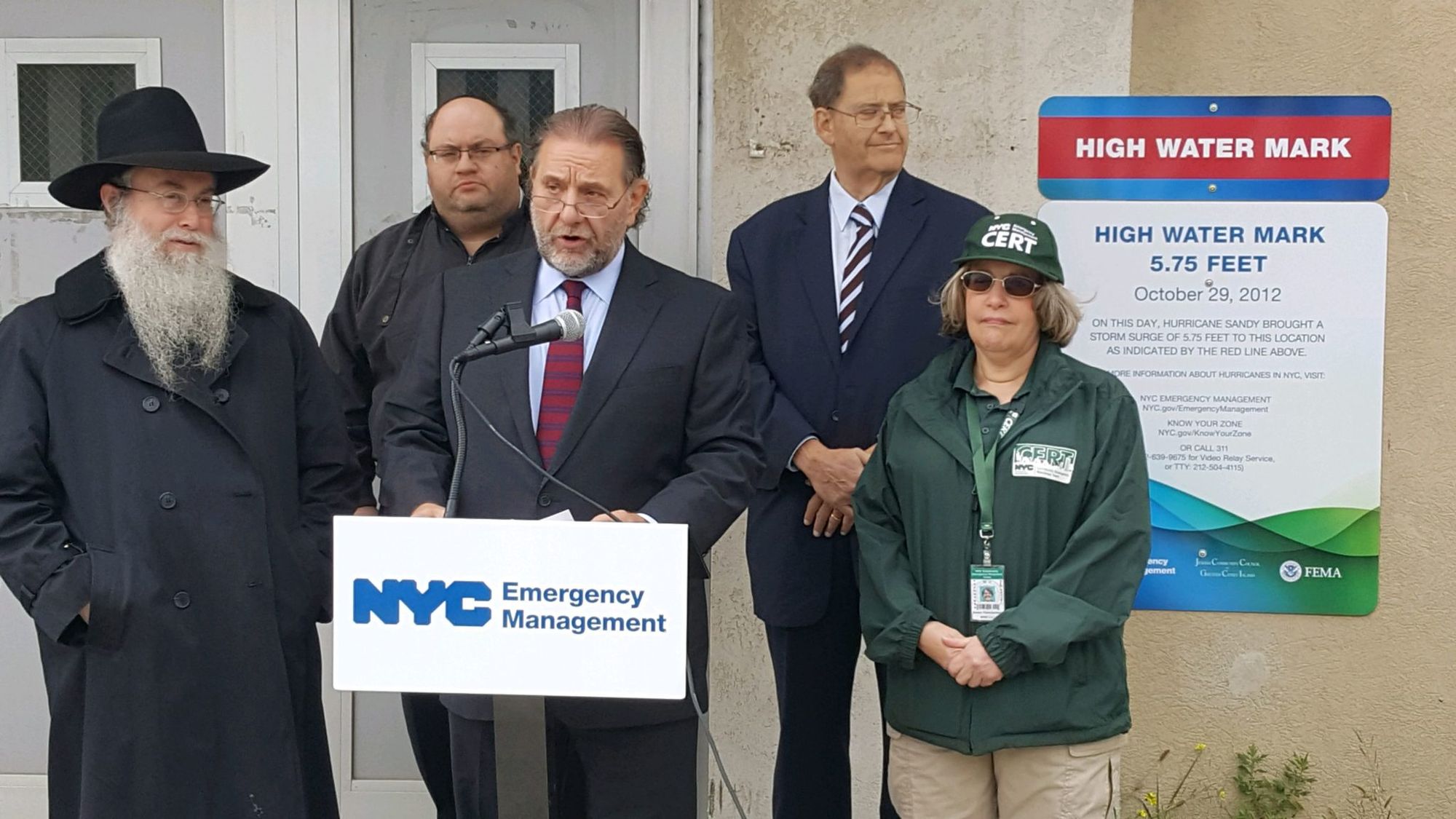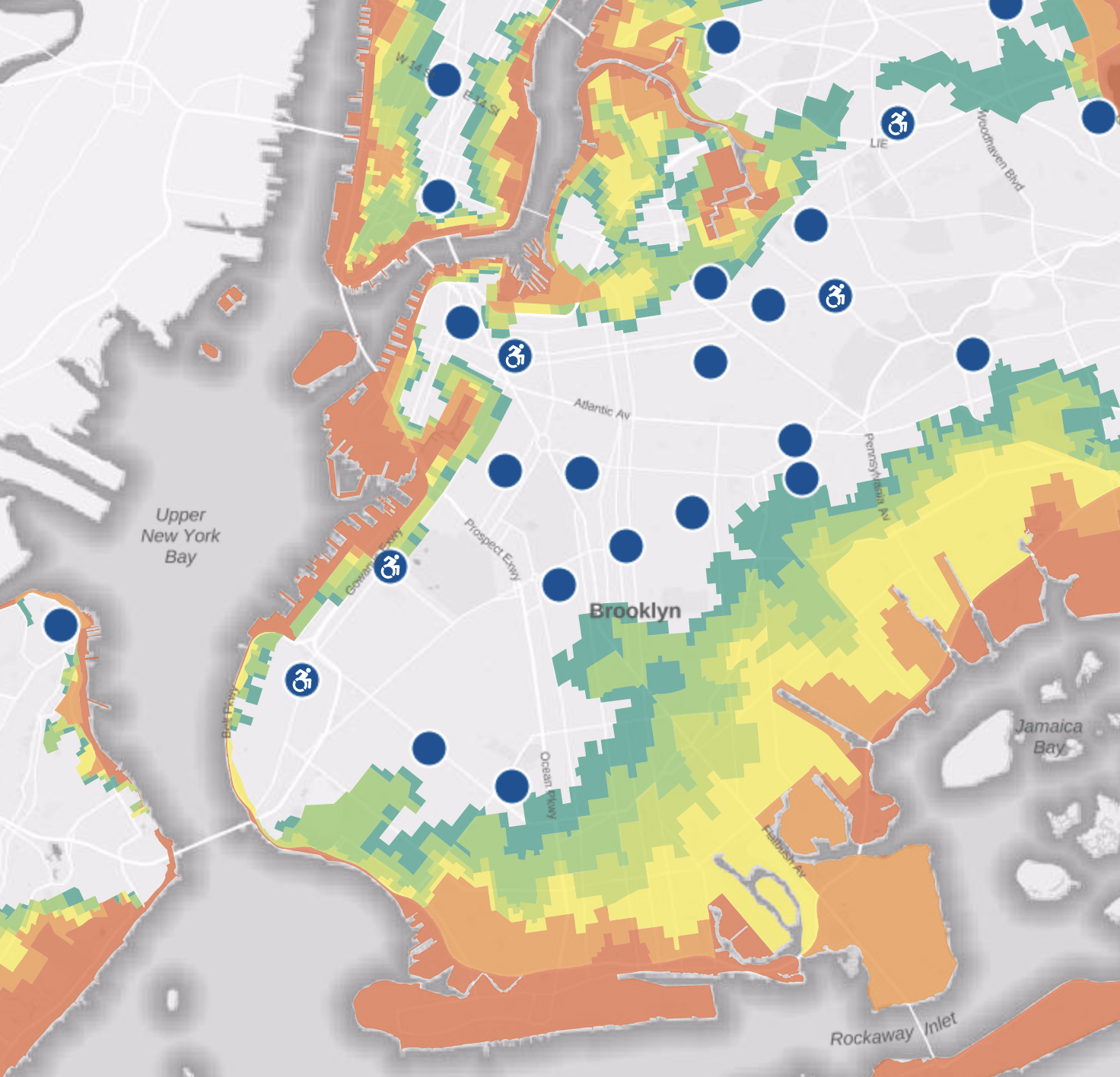5.75 Feet Of Water – Let Us Not Forget


CONEY ISLAND– As the time passes, it’s easy to forget just how much water came into the city during the storm surge. Ocean Parkway was the ocean.
Hurricane Sandy brought a storm surge of almost six feet, completely destroying the first-floor of the Jewish Community Center in Coney Island. Many other facilities suffered a similar fate, some still waiting to be rebuilt.
As the fifth anniversary of Hurricane Sandy approaches, a new sign was unveiled at the Jewish Community Council Center of Greater Coney Island. Designed with the help of the New York City Emergency Management Department (NYCEMD) as part of the FEMA High Water Mark Initiative, it marks how high the water rose in Coney Island, and will serve both as a reminder about how dangerous coastal storms and associated flooding can be.
“This sign is here to remind everyone about the life-threatening storm surge we experienced when Hurricane Sandy hit and to urge New Yorkers to plan to keep your family safe should another storm hit,” said NYC Emergency Management Commissioner Joseph Esposito.

Similar High Water Marks have been installed at MCU Park, and the Coney Island library.
“Our community was dealt a hard blow during Superstorm Sandy, and for many families in our neighborhoods, the effects are still being felt,” said NYS Assemblymember Pamela Harris. “The high water marker is a symbol of what we struggled with and is a reminder that we must be prepared for flooding. I’m proud to support this initiative and will continue fighting to make sure everyone in our community gets back on their feet in the wake of Sandy’s destruction.”
“As we approach the 5th Anniversary of Superstorm Sandy, it is important we remember the significance of the event as we build toward a more resilient New York,” said NYS Senator Diane Savino.
Let’s hope they serve as much a reminder to the residents, as politicians about all the work that still needs to be done to make our city more resilient to climate change.
A few things you should know about the Atlantic Hurricane season if you reside in Brooklyn, courtesy of the NYC Emergency Management Department:

- Even though the Atlantic hurricane season officially begins June 1 and runs through November 30, 84 percent of hurricanes form during peak hurricane season, from August through October.
- NYC Emergency Management plans and prepares year-round for coastal storms, and has a comprehensive Coastal Storm Plan that includes detailed procedures for evacuating and sheltering residents.
- In a major coastal storm, the City has the capacity to shelter up to 600,000 people with a shelter system that consists of 60 evacuation centers and more than 450 hurricane shelters, including special medical needs shelters.
- To supply and staff the shelter system, the City maintains an emergency stockpile of essential supplies and a database of City employees and volunteers who would be called upon to manage evacuation centers and emergency shelters. NYC Emergency Management also encourages New Yorkers to take steps to prepare for hurricanes:
- Know your zone: New York City is divided into six hurricane evacuation zones – it is important to know whether you live in a zone. To find out what zone you live in, visitwww.nyc.gov/knowyourzone or call 311.
- Make a plan: Make a plan before a storm arrives to help keep you and your family safe. Each member of your family should have a Go bag – a collection of important supplies that you may need if you have to leave your home in a hurry. For more information on how to pack a Go bag, visit here.
- Stay informed: New Yorkers can stay informed about emergencies during hurricane season and throughout the year. To sign up for Notify NYC, New Yorkers can call 311, visit NYC.gov/NotifyNYC, or follow @NotifyNYC on Twitter. Subscribers can receive alerts in seven ways: phone, email, SMS, fax, BlackBerry PIN, Instant Messenger, and Twitter. New Yorkers can also download the Notify NYC App for their smartphone. The Notify NYC mobile app is available for free download from iTunes or Google Play. Search for “Notify NYC.”




